Week 4 LO's Permanent Maxillary Molars
1/35
There's no tags or description
Looks like no tags are added yet.
Name | Mastery | Learn | Test | Matching | Spaced |
|---|
No study sessions yet.
36 Terms
What is a cusp?
pointed or rounded projection on the chewing surface of the tooth
What are the functions of the molar?
grind and crush food, use occlusal side for mastication
esthetics, keeps the cheeks full and supported
What is the order of molars?
wisdom teeth are 3rd molars, then 2nd, 1st
Class traits: how many lobes do the molars develop from?
4-5 lobes
maxillary first molar and mandibular first molar develop from 5 lobes
Class traits: what are the crowns of molars like? cusps? roots? size?
Largest & strongest crowns in the permanent dentition (1st molar → 2nd molar → 3rd molar)
3-5 cusps
2-3 roots (max have 3, mand have 2)
Short occlusocervically (height)
Class traits: what does it mean for a molar to be nonsuccedaneous?
they do not replace any baby teeth
erupt distally to all baby teeth
Class traits: what is the shape of the max and mand molars from the buccal and lingual view? Interproximal view inclination?
trapezoidal
mandibular molars incline lingually from interproximal view
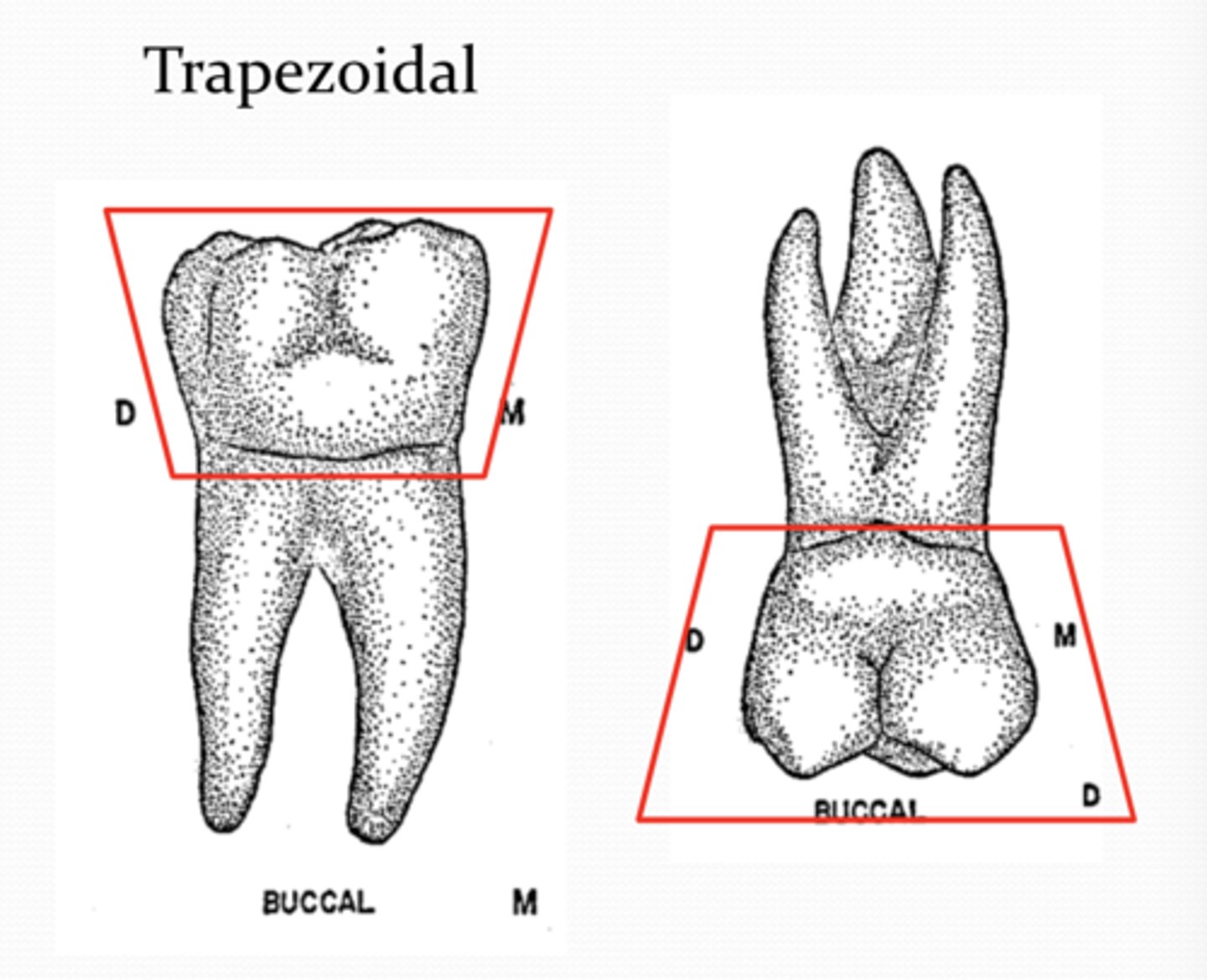
Maxillary Arch Traits: what is the shape of max molars from the interproximal view?
trapezoidal
Maxillary Arch Traits: describe the oblique ridge
Unique feature present on the occlusal of 1st and 2nd maxillary molars
Type of transverse ridge that crosses the occlusal obliquely from mesial to distal
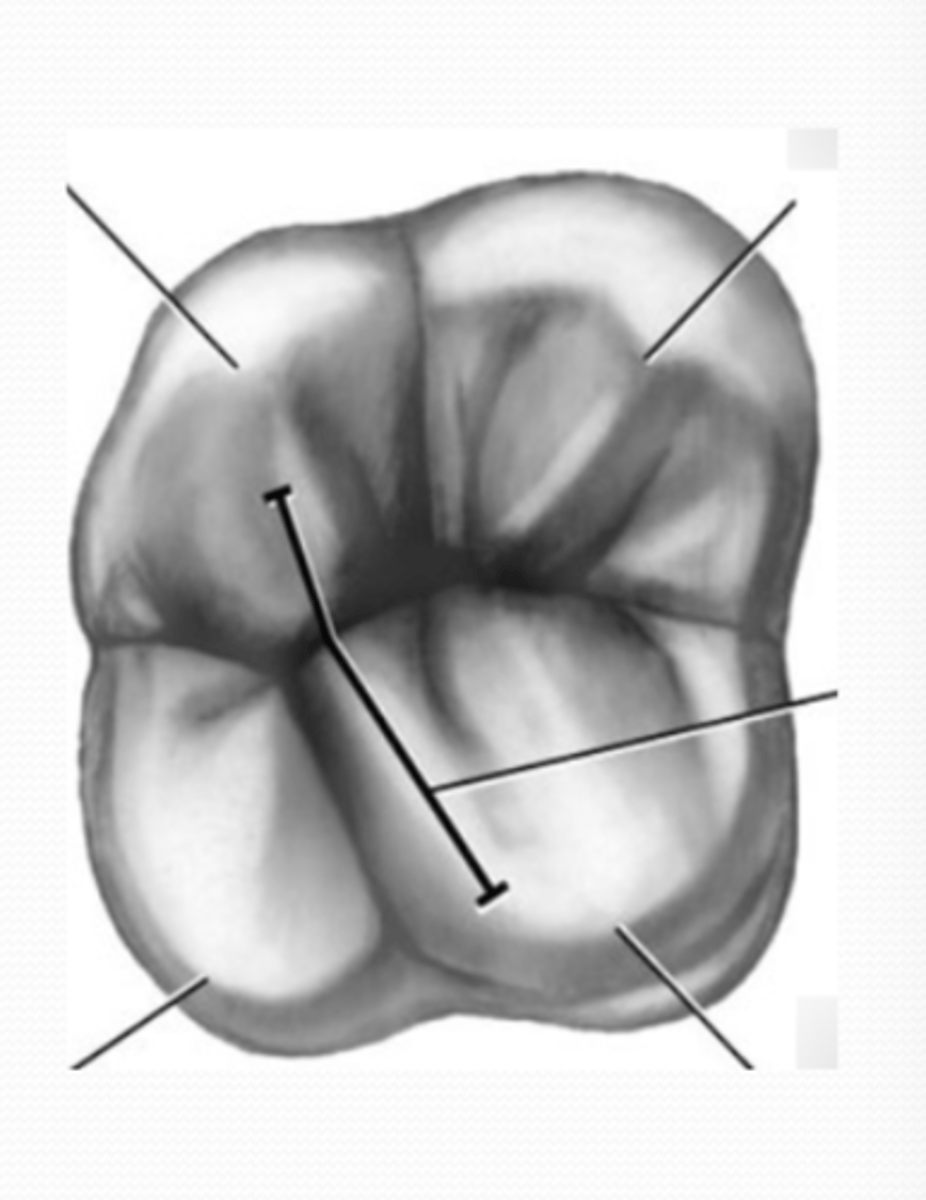
Maxillary Arch Traits: describe the occlusal view (width)
wider facial - lingually than mesial - distally
Maxillary Arch Traits: describe the roots
have 3 root branches (trifurcated)
Lingual/palatal root: usually the longest and largest
Mesial buccal root: second largest and longest
Distal buccal root: smallest and shortest
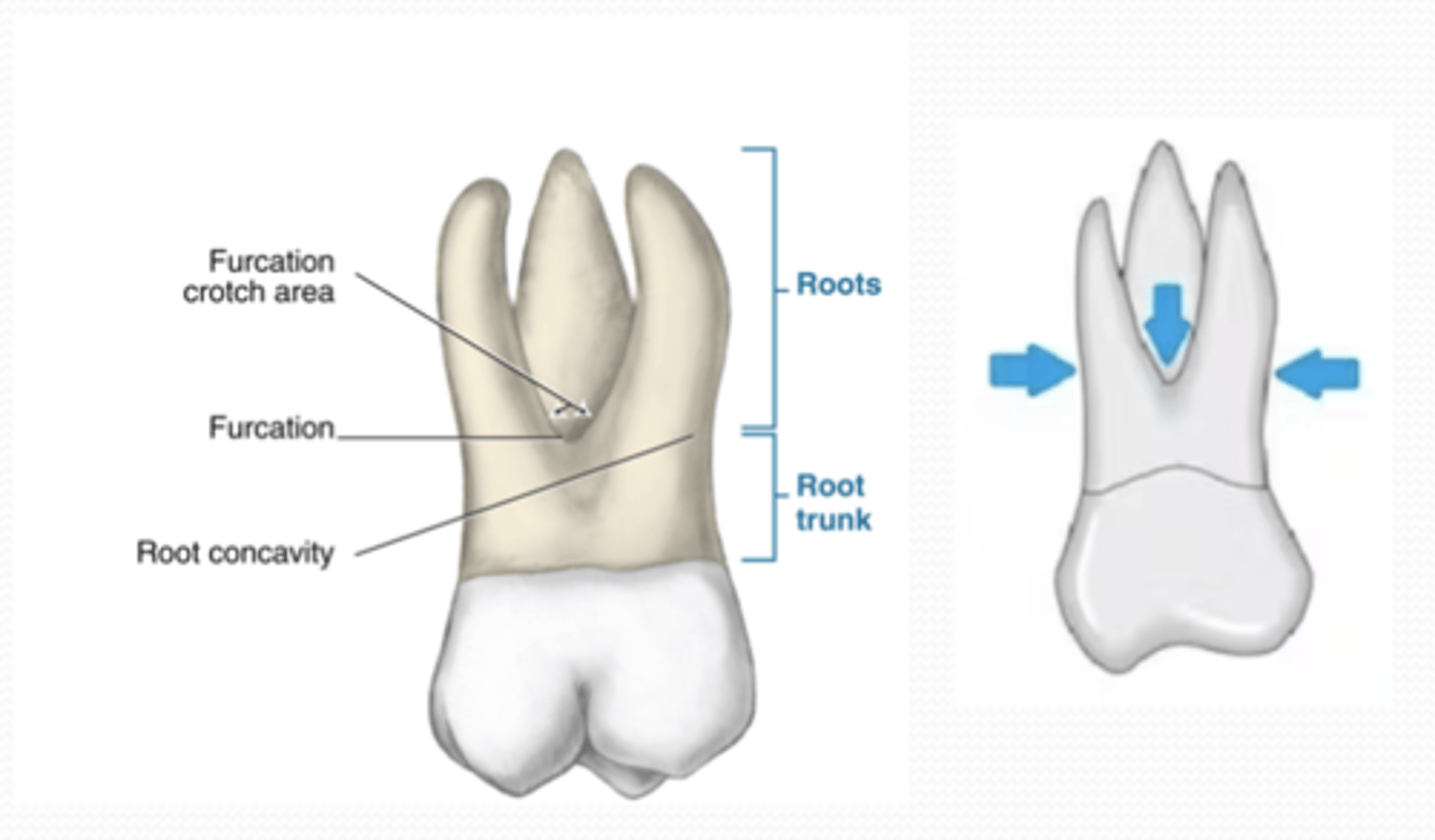
What are the numbers of the max first molars? when do they erupt?
3 and 14
erupt around 6-7 years, first permanent teeth
largest teeth
Max 1st Molars: describe the roots
roots are larger and more divergent (further apart) than 2nd and 3rd molars
"pliers" nickname
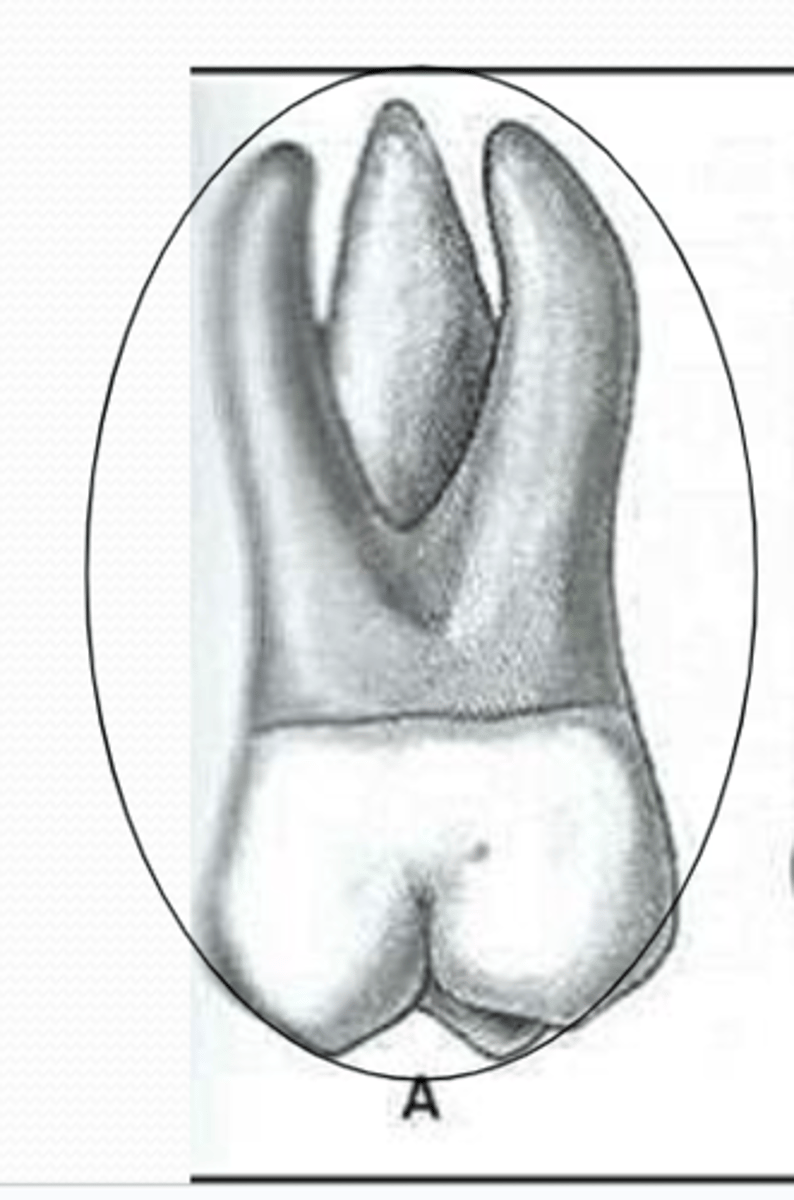
Max 1st Molars: describe the buccal view (MB and DB cusps, groove)
MB cusp is wider and DB cusp tip is sharper
-However, both MB and DB cusps are almost the same height and the ML cusp is noted between them
B groove (middle line)
Mesial is flat until it gets to the MHOC and then it is rounded
Distal is rounded all the way from the CEJ to the occlusal
can see three roots clearly
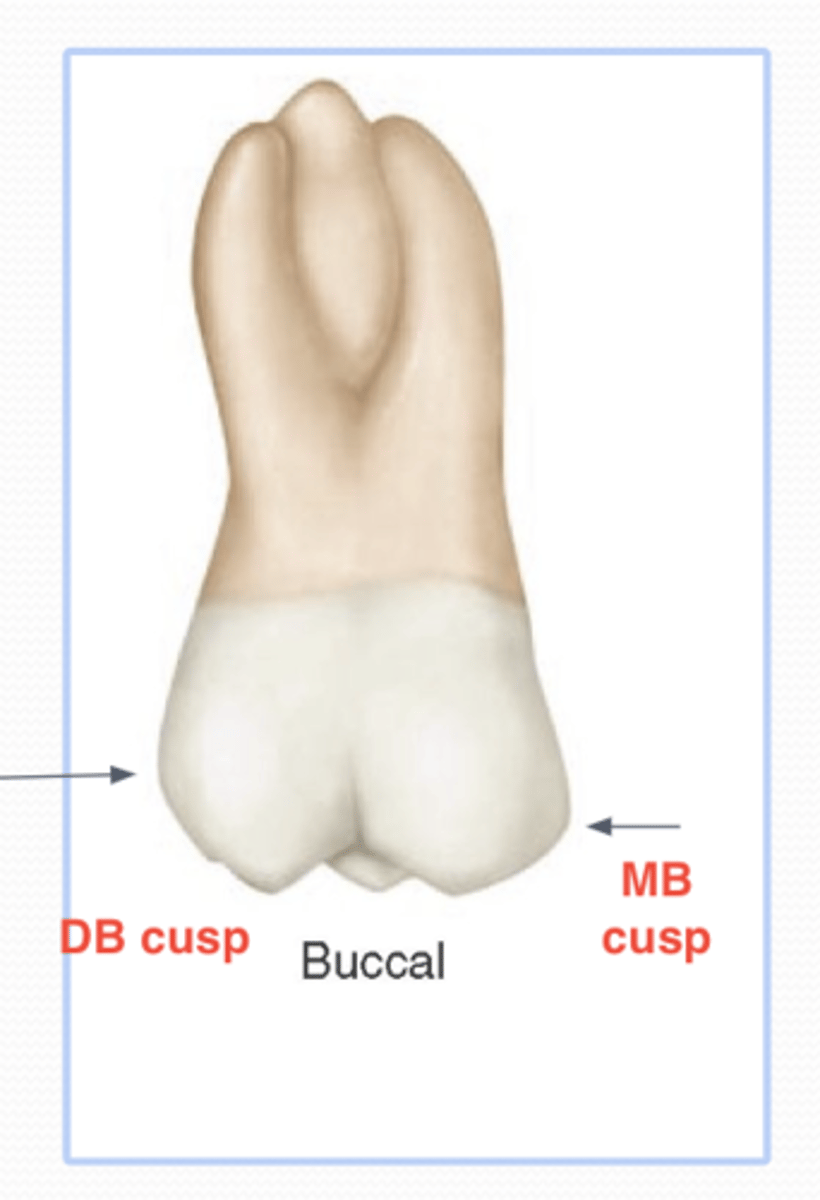
Max 1st Molars: describe the lingual view (root and ML and DL cusps, groove)
only one lingual root and is large and most visible
ML cusp is biggest so the outline is much longer and larger than the DL cusp outline
Distolingual groove (middle line)
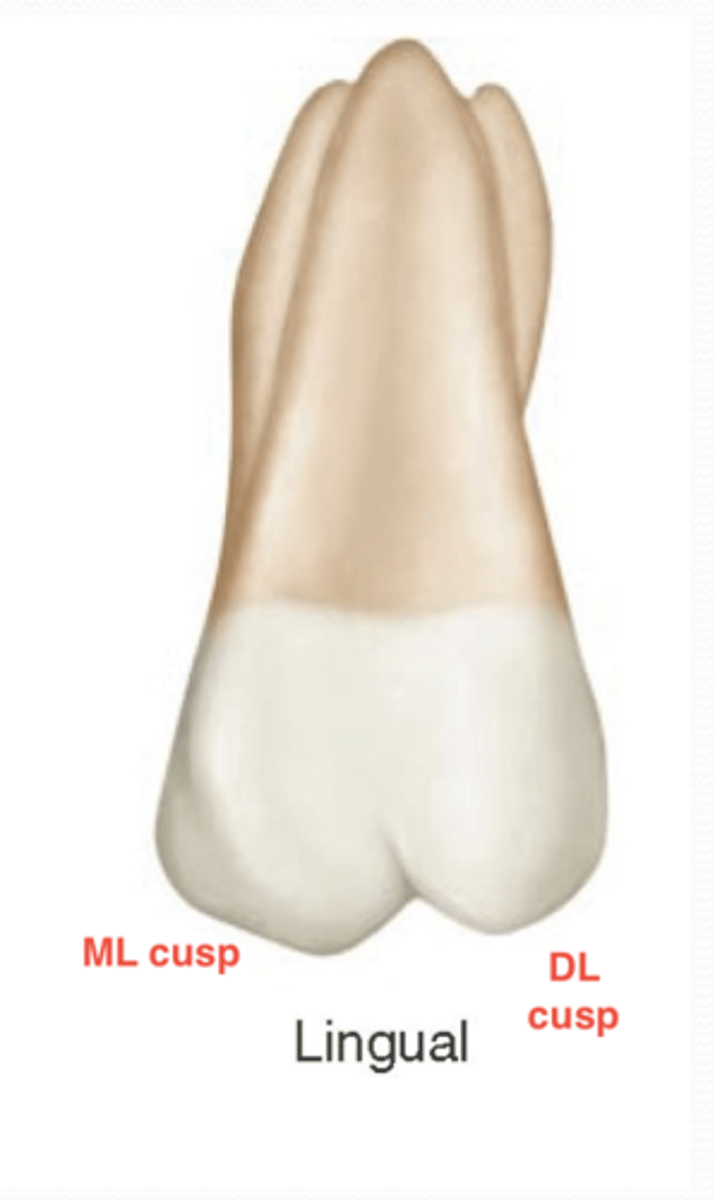
Max 1st Molars: describe the "cusp of carabelli" on the lingual view
5th nonfunctioning cusp
commonly arising from the lingual surface of the ML cusp of the max 1st molar
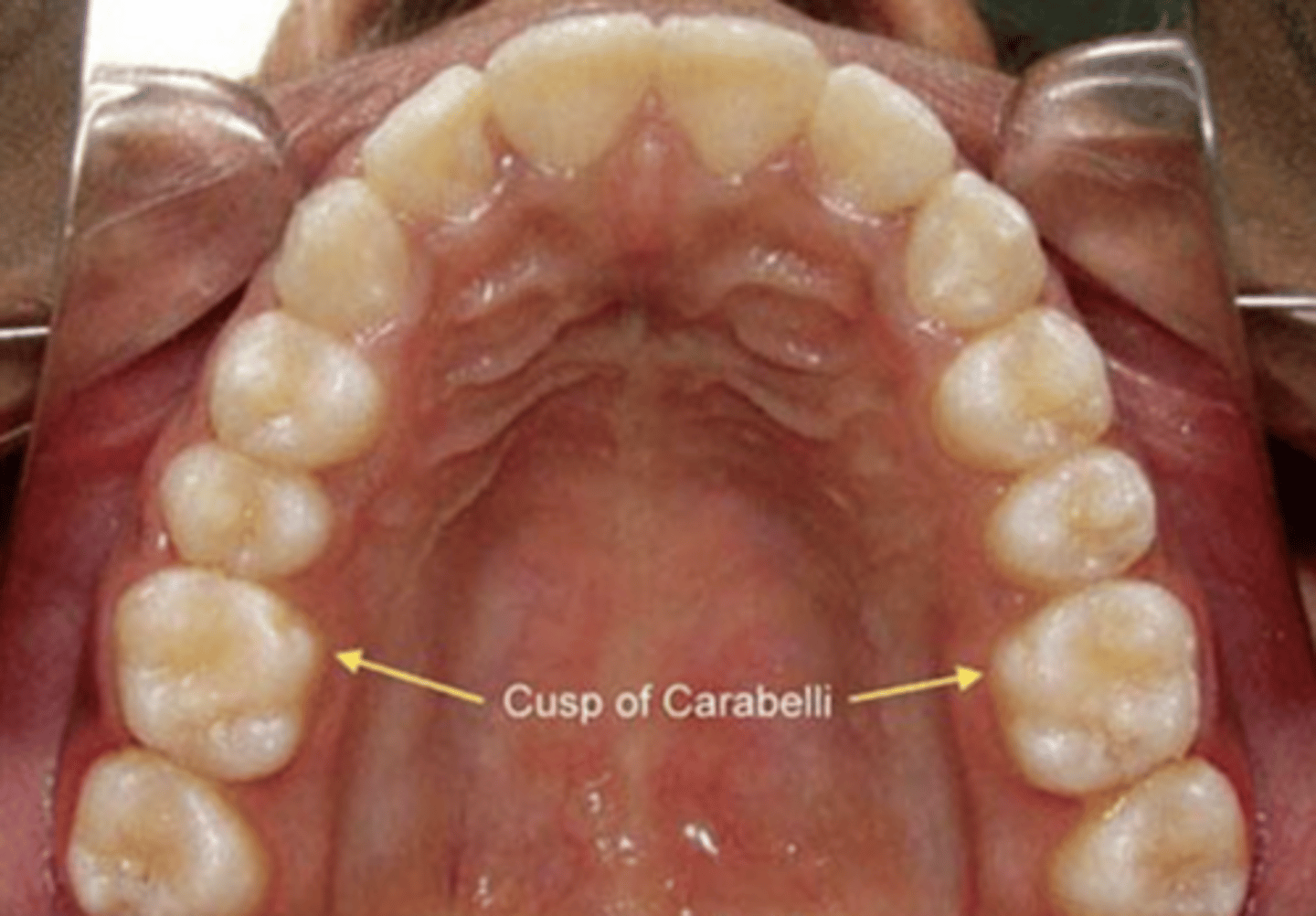
Max 1st Molars: where is a common area for cavities?
distolingual groove
Max 1st Molars: describe the occlusal view
4-5 Cusps (ML, MB, DB, DL, Cusp of Carabelli)
these are in order of largest to smallest cusps
rhomboidal shape
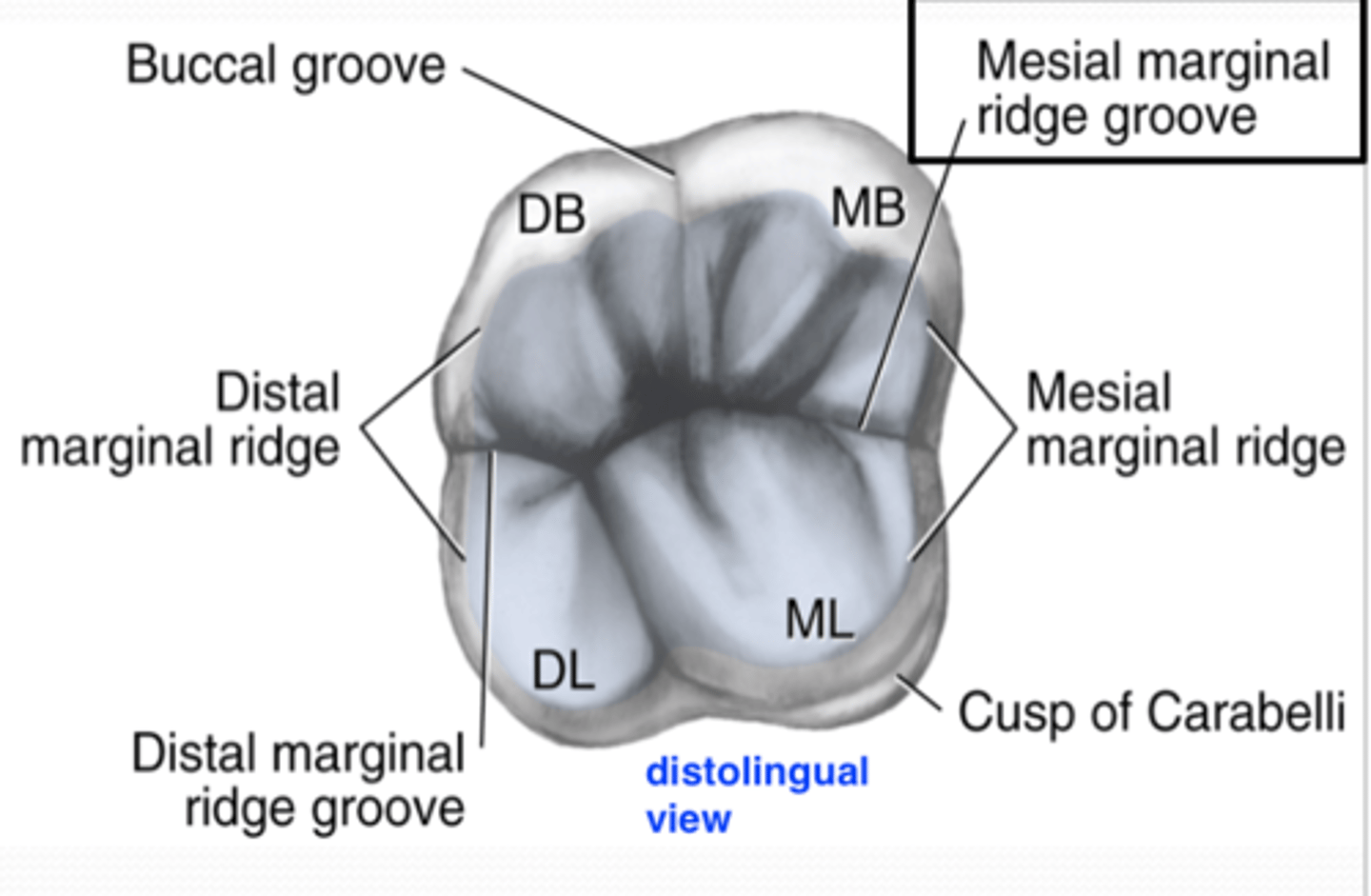
Max 1st Molars: describe the interproximal view (cusp views)
Since both mesial cusps are bigger than the distal cusps, from the mesial view, you cannot see the distal cusps
from the distal view, you can see the mesial cusps
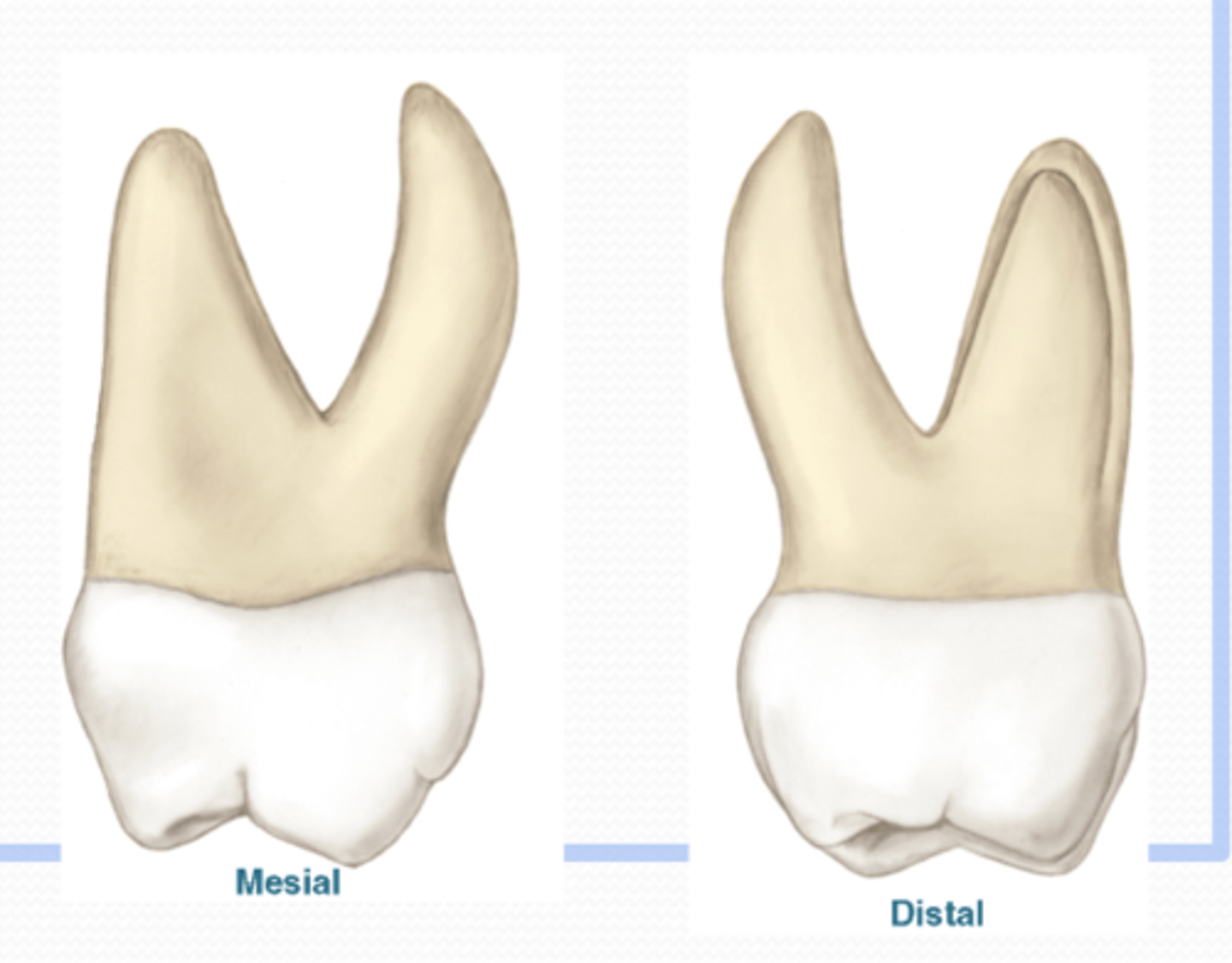
Max 1st Molars: where is calculus more common?
DB surfaces of Mx 1st molars because it is opposite the duct openings of the parotid salivary glands
Max 1st Molar: Describe mesial drift
if Mx 1st molar is lost, there is mesial drift of Mx 2nd molar and super-eruption of Md 1st molar to fill that space
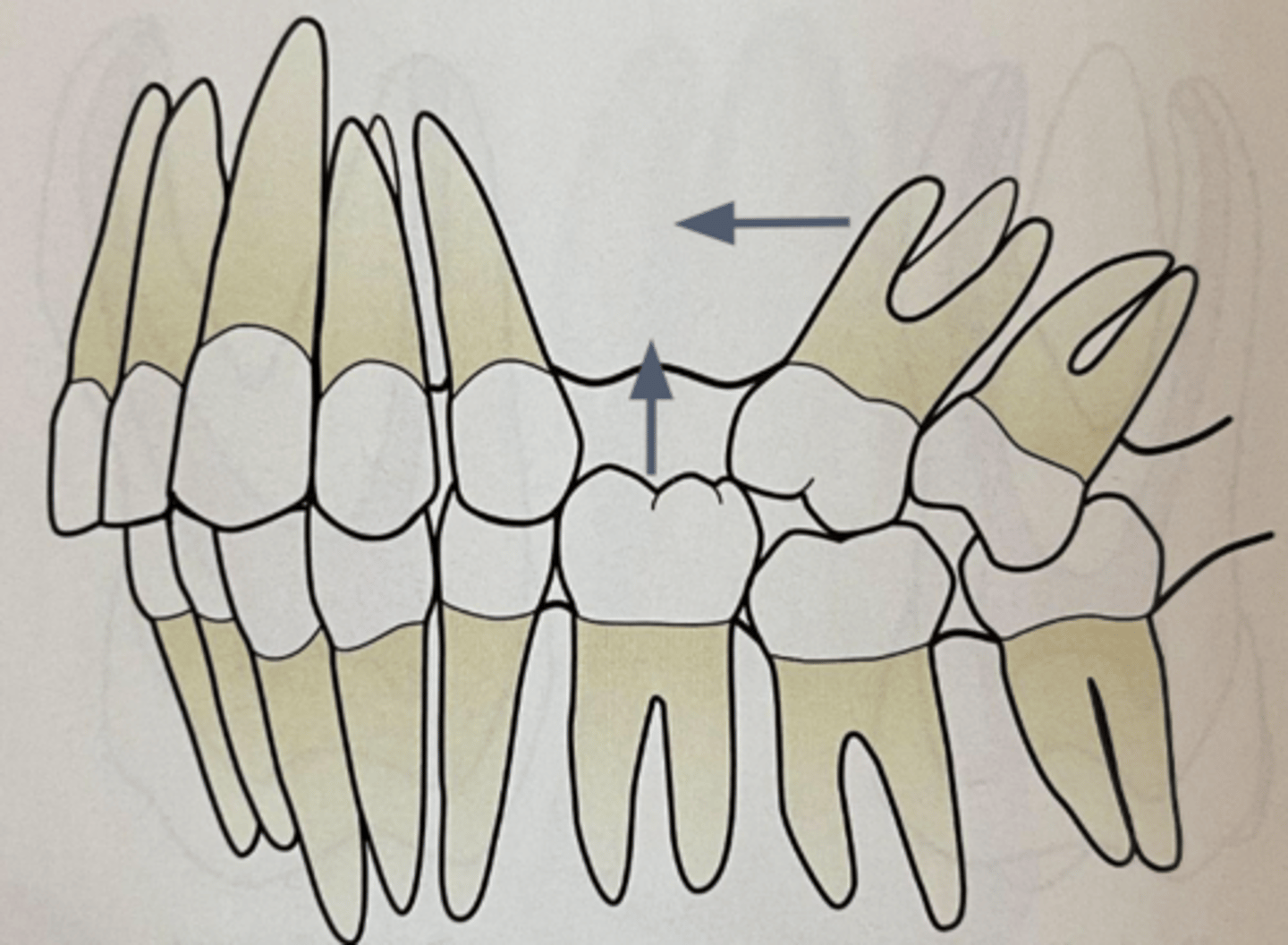
What are the numbers of the max second molars? when do they erupt?
2 and 15
erupt around 12-13 years
Max Second Molars: describe the lobes and cusps
4 lobes
can have 3-4 cusps
similar to a Max First Molar, but no cusp of carabelli and has a smaller (or may be missing) DL cusp
Max Second Molars: describe the roots
smaller and less divergent as compared to a Mx 1st molar
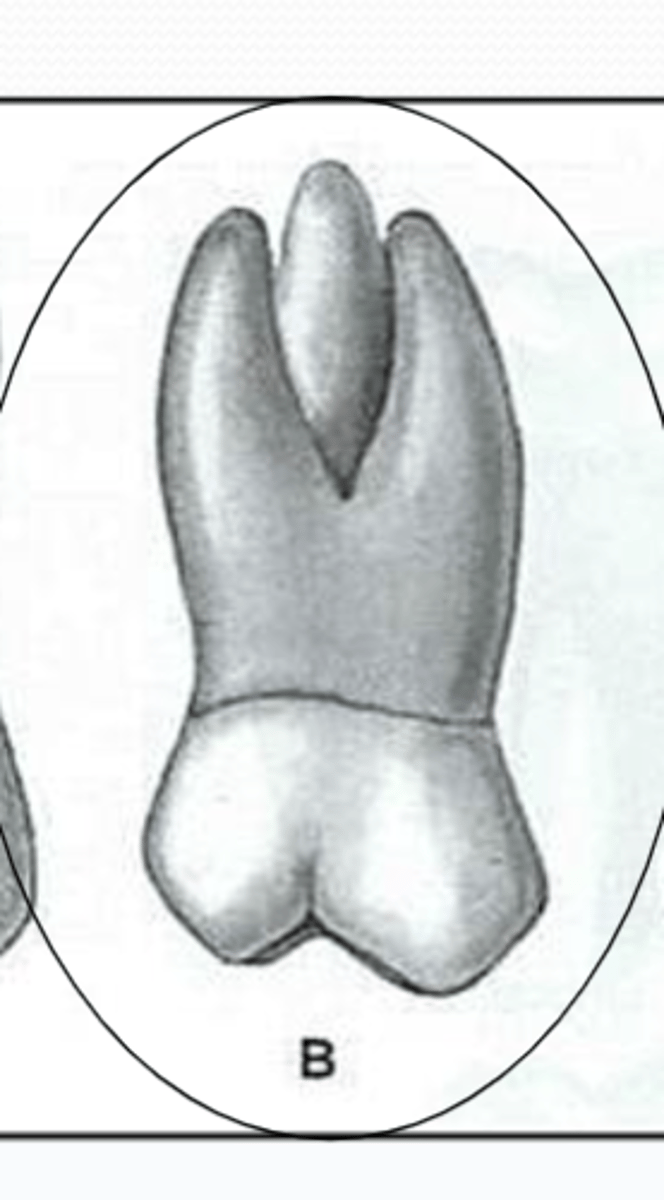
Max Second Molars: describe the buccal view (height, width, db and mb cusp, grooove
-Shorter occlusocervically and narrower M-D than a Mx 1st molar
DB cusp tip is sharper than MB cusp tip (same as Mx 1st molar)
MB cusp is longer (different than Mx 1st molar where both B cusps are almost the same height)
B groove (further distal than on a Mx 1st molar)
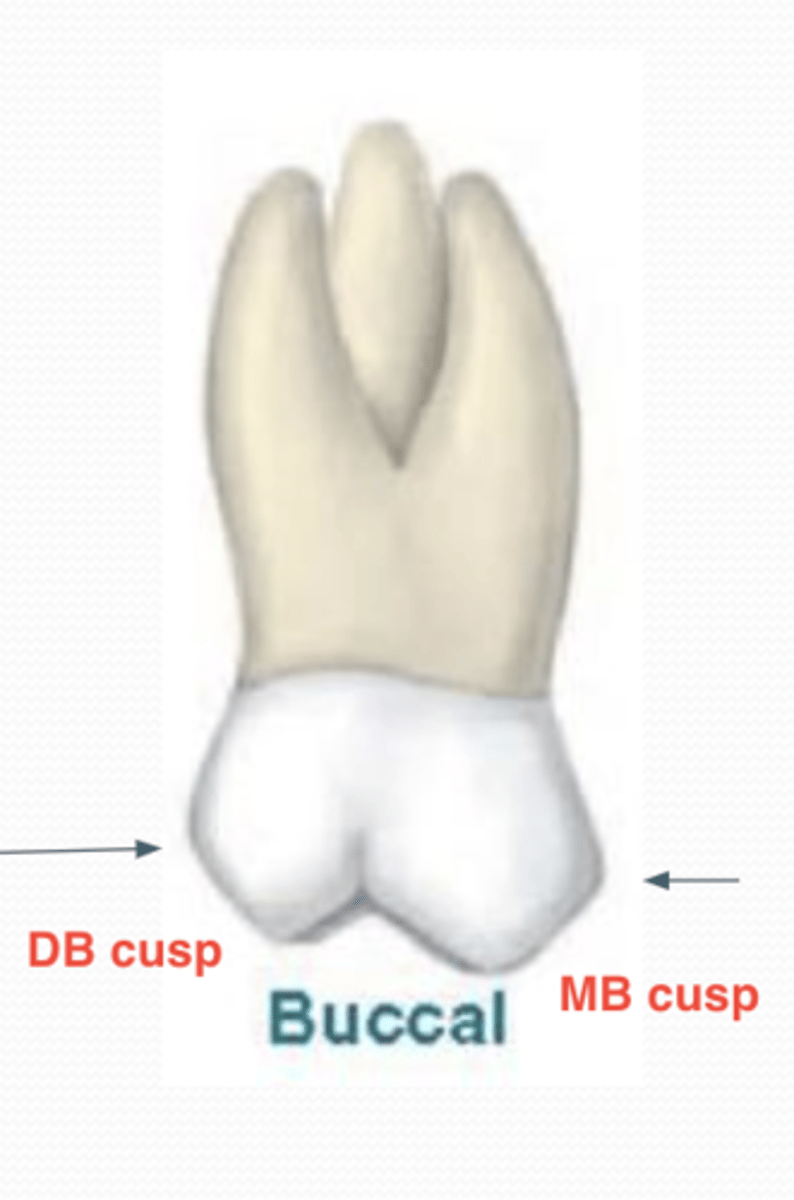
Max Second Molars: describe the lingual view (dl and ml cusp, groove)
no cusp of Carabelli
DL cusp is smaller and shorter than on a Mx 1st molar and is sometimes not present
ML cusp is biggest (same as Mx 1st molars)
Distolingual groove
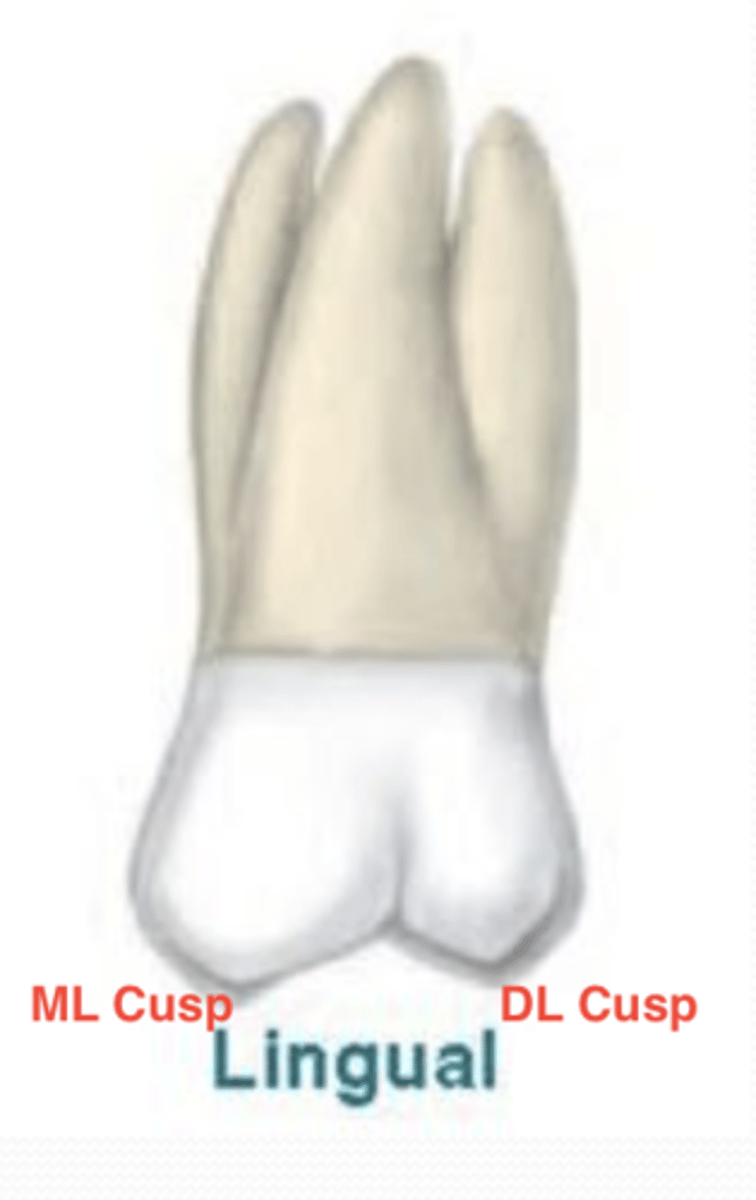
Max Second Molar: describe the occlusal view for 4 cusp form
more common and is similar to the mx 1st molars (ML, MB, DB, DL)
rhomboid shape like Mx 1st molars
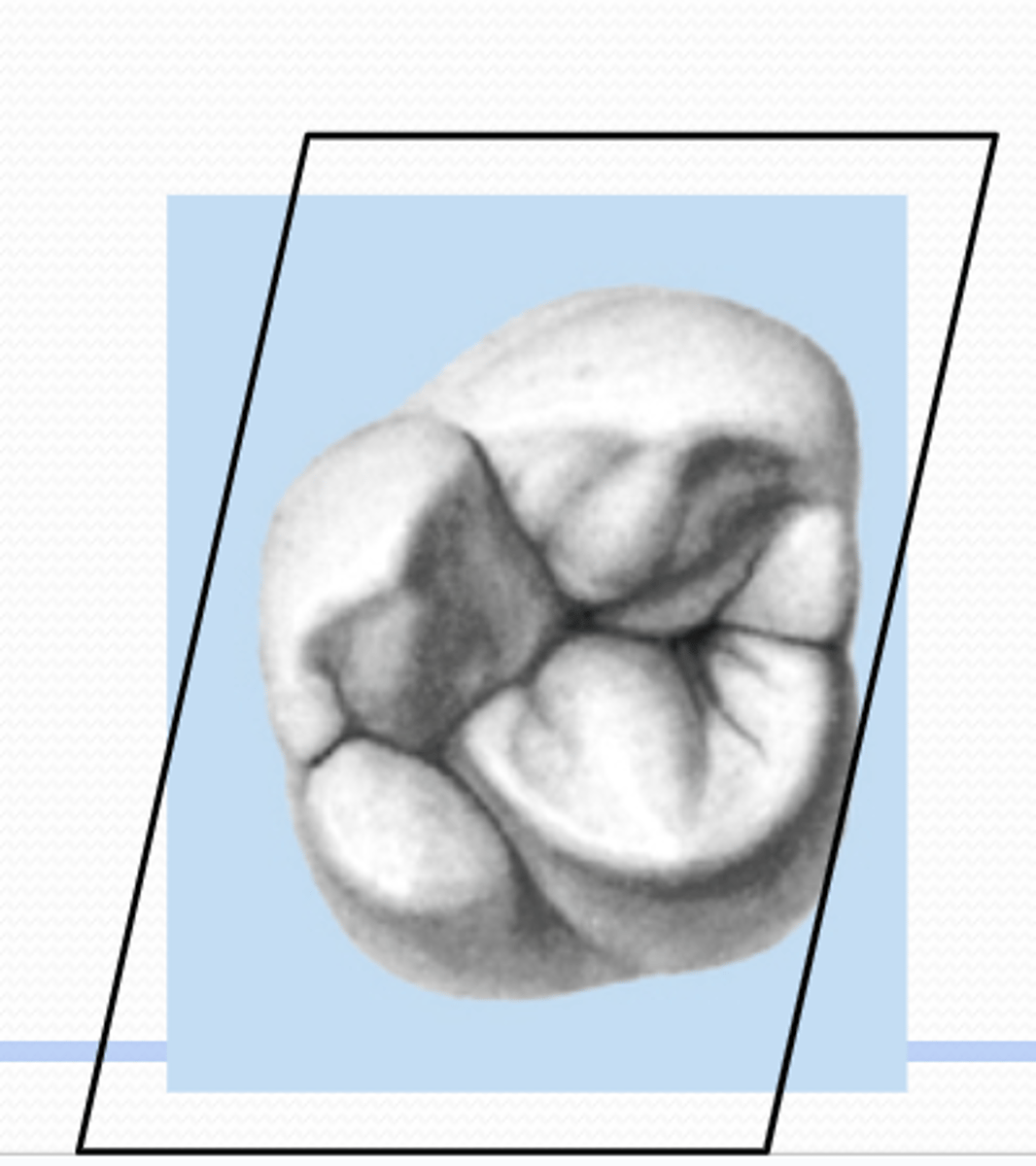
Max Second Molar: describe the occlusal view for 3-4 cusp form
very small (or may be missing) DL cusp
similar to max 3rd molars
heart-shape from the occlusal
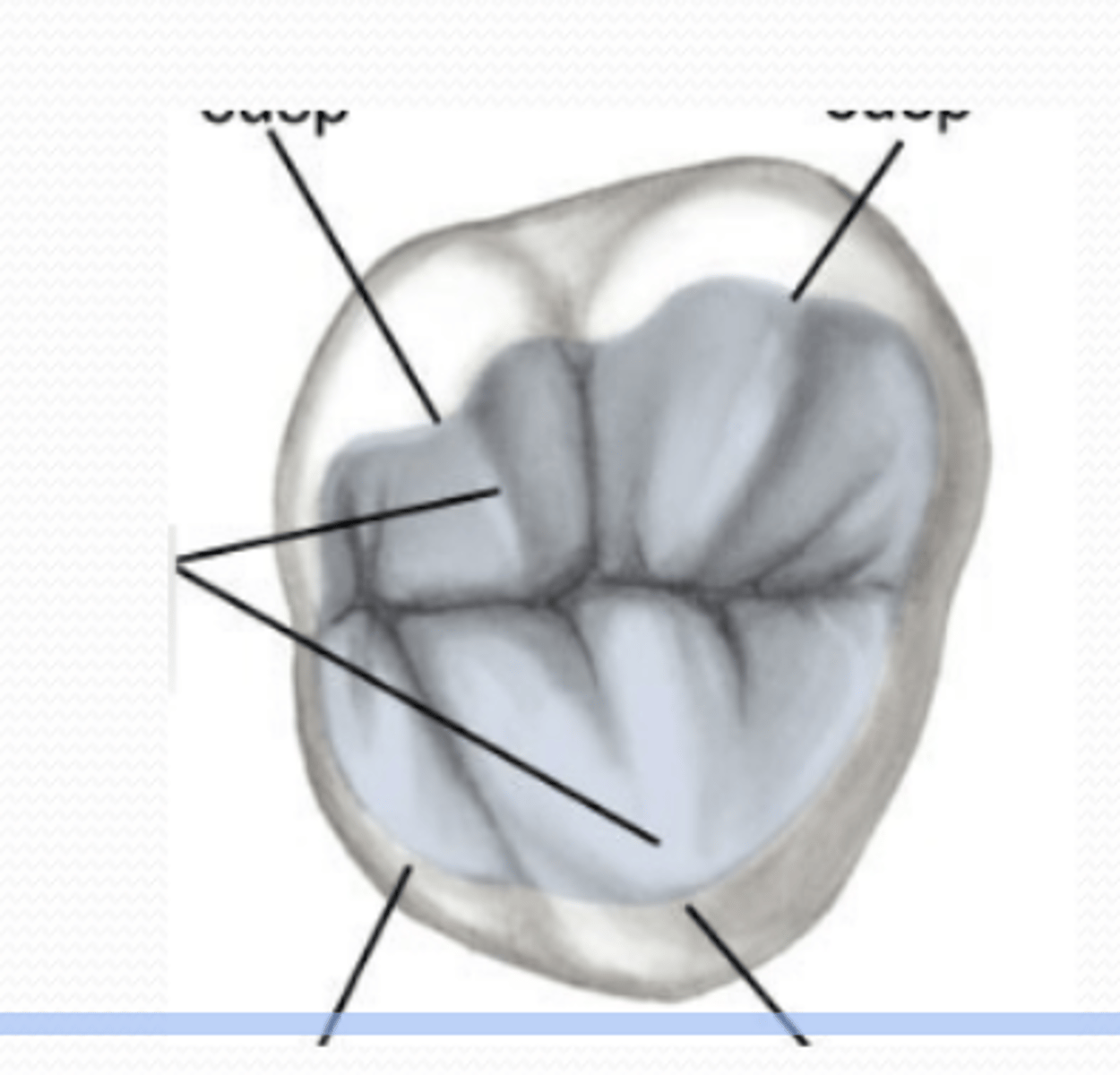
Max Second Molar: describe the distal contact
there is no distal contact (unless patient has 3rd molars)
common area for calculus (direct distal)
What are the numbers of the max third molars? when do they erupt?
1 and 16, wisdom teeth
erupt 17-21 yrs old
Max Third Molars: describe the type traits (size, appearance)
greatest variation
usually the smallest of the maxillary molars
more supplemental grooves = more wrinkled appearance on occlusal
occlusal is more wrinkled
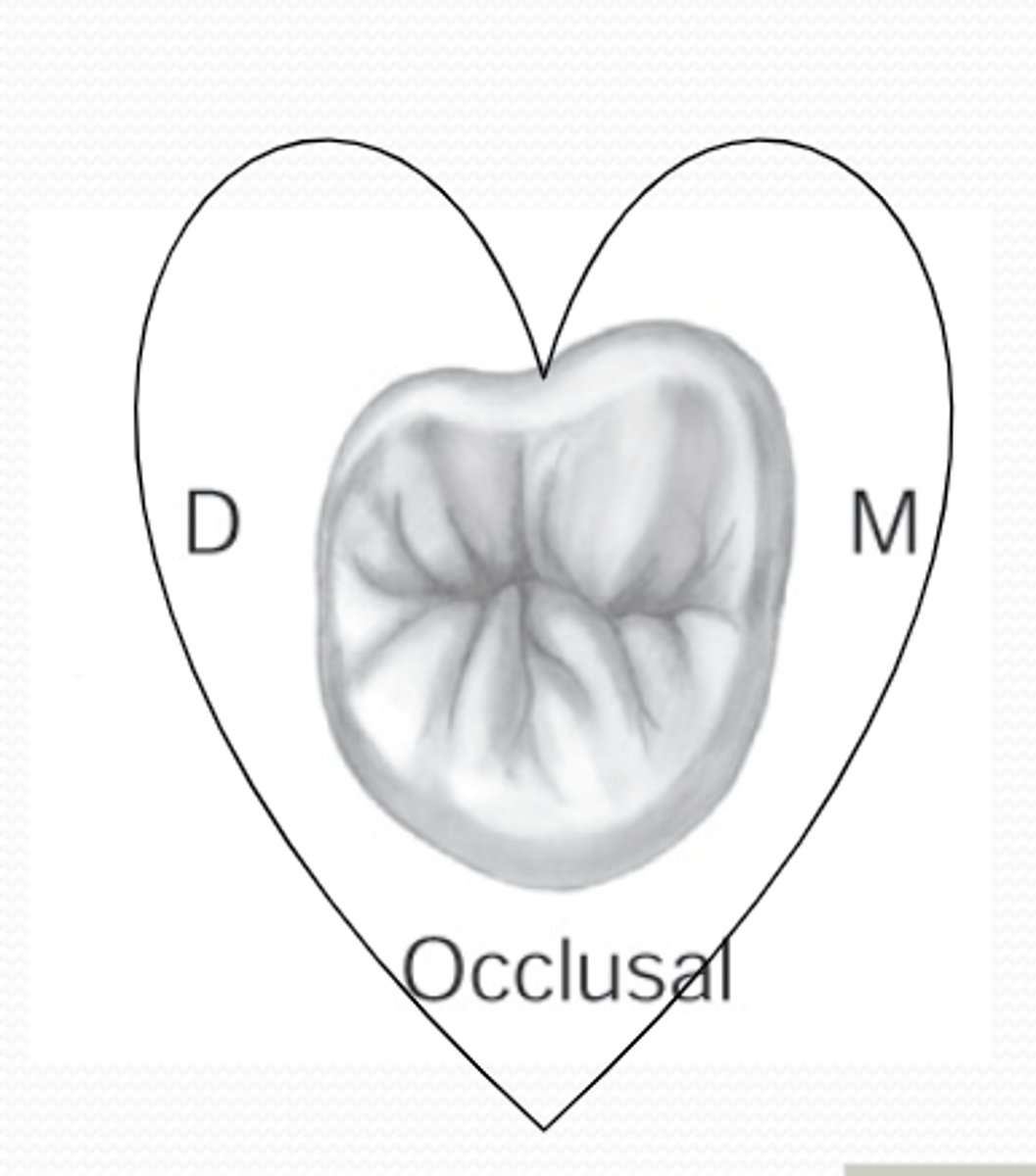
Max Third Molars: describe the roots
roots flare distally and are fused together
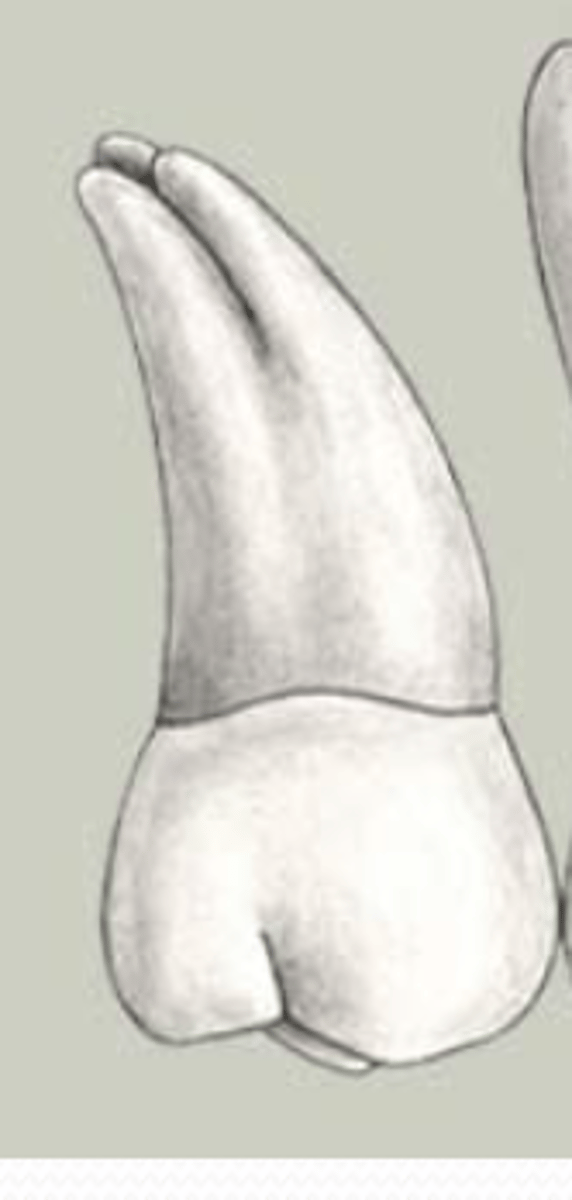
Max Third Molars: describe the variations
Microdontia/peg, tiny size
Partial anodontia (missing a few wisdom teeth)
Extra wisdom tooth
Extra roots (4)
Max Third Molars: describe the risks
heavy deposits
high risk of periodontitis and caries
Max Third Molars: describe occlusal side
wrinkled, three cusps, heart shape
Max Third Molars: compare buccal cusps
mesial buccal cusp is bigger than distal buccal